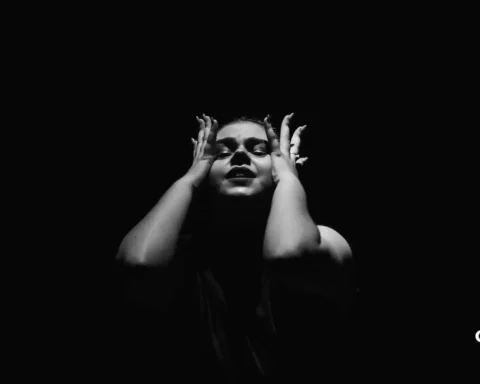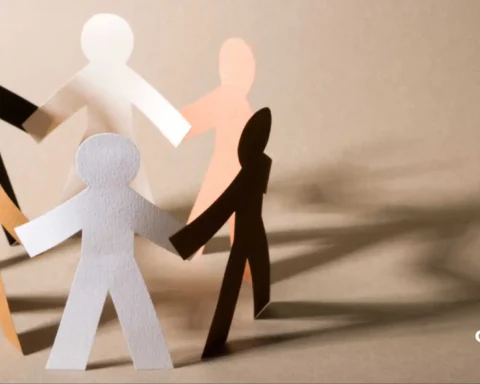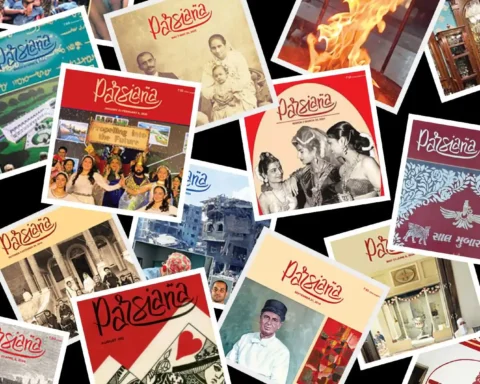In the intricate mosaic of Indian culture, the imprint of Western culture in India stands out as a vibrant thread that has woven its way through the fabric of society. From art and fashion to music and cuisine, the infusion of Western elements has spun a new narrative that venerates India’s diversity and challenges its conventions.
This expedition explores this new culture woven by Western cultural influence in India, unearthing its historical foundations, societal repercussions, and the ongoing dialogue between orthodox practices and modern viewpoints. Join us as we begin to comprehend the evolution and assimilation of Western culture within the vibrant mosaic of India.
Table of Contents
Historical Roots of Western Cultural Influence
The intertwining of Western culture with the rich tapestry of Indian heritage marks a significant chapter in the history of cultural evolution. The arrival of Western civilisation, particularly during the era of British rule, initiated a transformative period that left an indelible impact on the cultural fabric of India.
The British colonial rule, spanning over two centuries, acted as a conduit through which Western values, customs, and institutions were introduced to Indian society. This marked a pivotal moment in the convergence of Western culture with India’s age-old traditions. The British administrators brought with them governance systems and elements of Western lifestyle, education, and governance.
The encounter between Western and Indian cultures was multi-faceted. It led to the fusion of architectural styles, wherein traditional Indian designs melded with Western architectural concepts, giving rise to new forms of buildings and urban planning. Similarly, in the realm of art and aesthetics, Western art movements began to influence Indian artists, resulting in unique interpretations that blended the two worlds.
Education played a vital role in this cultural exchange. The introduction of English language education opened avenues for Indians to access Western literature, scientific advancements, and philosophical ideas. This exposure led to the reinterpretation of traditional Indian knowledge through a Western lens, giving rise to a new intellectual landscape.
However, this exchange had its challenges. The juxtaposition of Western and Indian cultures led to friction and debates about cultural heritage and identity. Critics argued that Western influence threatened the sanctity of Indian traditions, while proponents believed that it brought progress and modernity to a society grappling with change.
In the long run, the historical roots of Western cultural influence on Indian society have left a lasting impact. The hybridisation of cultural practices, the infusion of English into the educational and administrative spheres, and the emergence of a new socio-cultural landscape all stand as testament to this convergence. As India continues to navigate its modern identity, the legacy of Western cultural influence remains an integral part of its diverse cultural mosaic.
Manifestations in Art and Aesthetics
The interplay between Indian culture and Western civilisation, catalysed during the era of British rule, has left an indelible mark on the artistic and aesthetic landscape of the nation. This fusion, borne out of historical encounters, has generated diverse manifestations that reflect the amalgamation of two distinct yet complementary traditions.
During British colonial rule, the introduction of Western artistic techniques and perspectives led to a dynamic transformation in India’s artistic expression. Traditional Indian art forms, which had evolved over centuries, intersected with Western principles of perspective, realism, and chiaroscuro. This convergence birthed a new visual vocabulary marked by a harmonious blend of Eastern and Western elements.
Architecture bore witness to a unique synthesis, as traditional Indian architectural motifs incorporated Western structural approaches. Neo-Gothic, Neo-Classical, and Indo-Saracenic styles emerged, showcasing a marriage of intricate Indian detailing with Western architectural grandeur. This fusion can be observed in landmarks like the Victoria Terminus in Mumbai, which seamlessly marries Indian craftsmanship with British architectural sensibilities.
The impact of Western influence on Indian society’s aesthetic sensibilities extended to fashion and lifestyle. Adopting Western clothing styles, a byproduct of British rule, introduced a new sartorial language to India. This integration of Western fashion norms with traditional attire reshaped Indian dress codes and symbolism, resulting in a vibrant wardrobe reflecting heritage and modernity.
Cultural heritage underwent a reimagining as well. Indian artists, exposed to Western artistic ideologies, began to reinterpret traditional narratives through a Western lens. This gave rise to a plethora of hybrid artworks that bridged the gap between Indian mythology and Western artistic techniques, fostering a cross-cultural dialogue on canvas.
The manifestations of Western influence in Indian art and aesthetics are a testament to the dynamic synergy between Indian culture and Western civilization. This interplay, ignited during the British colonial period, not only revolutionised artistic expressions but also fostered a shared cultural heritage that continues to resonate in contemporary Indian society. The fusion of artistic elements from both worlds is a vibrant reminder of the enduring impact of historical encounters on the creative landscape of India.
Musical Crossroads: The Fusion and Evolution of Western and Indian Music
The 18th century marked the inception of a remarkable journey at the musical crossroads where Western civilization met the rich tapestry of Indian musical traditions. Emerging from the heart of Western Europe, a symphony of influences began to permeate the boundaries of musical expression, ultimately shaping the course of Western and Indian music.
Western countries, especially those in Western Europe, became the epicentre of a musical renaissance during this period. The symphonic structures, harmonic progressions, and intricate compositions of European classical music captivated hearts and minds, catalyzing a global musical exchange.
In India, a land steeped in its musical legacy, the introduction of Western musical elements created a captivating interplay. A melodic dialogue unfolded as Western society’s musical nuances intertwined with India’s intricate ragas and rhythms. The result was a wide range of spectrum of musical fusions that embraced both the old and the new, the East and the West.
The fusion of Western and Indian musical elements led to the evolution of a new genre: Indian-Western fusion music. This genre found expression in diverse forms, such as collaborations between Indian classical musicians and Western orchestras or the incorporation of Western instruments into traditional Indian ensembles. This fusion extended beyond the realms of classical music, seeping into popular genres, jazz, and even Bollywood soundtracks.
The impact of this musical crossroads extended beyond artistic experimentation. It forged connections between two distinct yet harmonizing musical languages, fostering cultural exchange and understanding. As melodies from Western operas intertwined with traditional Indian folk tunes, a narrative of shared human experiences emerged.
The musical crossroads where Western civilization encountered Indian musical traditions in the 18th century gave rise to a rich and dynamic fusion. This fusion didn’t just blur boundaries; it created an entirely new musical language that resonated across cultures. The evolution of Indian-Western fusion music stands as a testament to the transformative power of music, transcending geographical and cultural divides and weaving a harmonious tapestry of melodies that continues to enchant audiences worldwide.
YOU MIGHT BE INTERESTED IN: Music, Culture, and Indianness: The Journey of Ila Arun
Culinary Encounters: Exploring the Fusion of Flavors
The 18th century marked the inception of a remarkable journey at the musical crossroads where Western civilization met the rich tapestry of Indian musical traditions. Emerging from the heart of Western Europe, a symphony of influences began to permeate the boundaries of musical expression, ultimately shaping the course of Western and Indian music.
Western countries, especially those in Western Europe, became the epicentre of a musical renaissance during this period. The symphonic structures, harmonic progressions, and intricate compositions of European classical music captivated hearts and minds, catalyzing a global musical exchange.
In India, a land steeped in its musical legacy, the introduction of Western musical elements created a captivating interplay. A melodic dialogue unfolded as Western society’s musical nuances intertwined with India’s intricate ragas and rhythms. The result was a wide range of spectrum of musical fusions that embraced both the old and the new, the East and the West.
The fusion of Western and Indian musical elements led to the evolution of a new genre: Indian-Western fusion music. This genre found expression in diverse forms, such as collaborations between Indian classical musicians and Western orchestras or the incorporation of Western instruments into traditional Indian ensembles. This fusion extended beyond the realms of classical music, seeping into popular genres, jazz, and even Bollywood soundtracks.
The impact of this musical crossroads extended beyond artistic experimentation. It forged connections between two distinct yet harmonizing musical languages, fostering cultural exchange and understanding. As melodies from Western operas intertwined with traditional Indian folk tunes, a narrative of shared human experiences emerged.
The musical crossroads where Western civilization encountered Indian musical traditions in the 18th century gave rise to a rich and dynamic fusion. This fusion didn’t just blur boundaries; it created an entirely new musical language that resonated across cultures. The evolution of Indian-Western fusion music stands as a testament to the transformative power of music, transcending geographical and cultural divides and weaving a harmonious tapestry of melodies that continues to enchant audiences worldwide.
TUNE INTO THIS PODCAST: Celebrating National Identity and Immigration: Meeru Dhalwala’s Culinary Ventures
Socio-Cultural Impact of Western Culture in India and Challenges of Western Civilization
The 18th century marked a significant turning point in the global narrative, as Western civilization’s influence permeated societies far beyond its origins. One of the foremost impacts was the propagation of Christian culture and values, which carried with it both transformative potential and inherent challenges.
As the tenets of Christian civilization increasingly defined Western societies, the desire to extend these values to other corners of the world grew. This drive was underpinned by a sense of moral duty to share religious beliefs, establish cultural norms, and introduce new systems of governance.
The socio-cultural impact of this wave of Westernization was profound. In regions previously untouched by Christian values, the introduction of new religious practices, belief systems, and norms led to a recalibration of local social structures. The dynamics of families, communities, and power structures underwent shifts as traditional practices were either supplanted or modified to align with Christian ideals.
However, the spread of Christian culture also posed significant challenges. The imposition of foreign religious beliefs often clashed with established indigenous spiritual practices and cultural norms. This clash of worldviews sometimes resulted in tension, resistance, and attempts to preserve local identities against the tide of Christian civilizational influence.
Furthermore, the dissemination of Western values carried certain assumptions and biases. Local cultures and histories’ complexities were sometimes simplified or overlooked, leading to misunderstandings and misinterpretations. This hindered effective cultural exchange and reinforced the notion of Western cultural superiority.
The socio-cultural impact of Western civilization’s expansion in the 18th century was transformative and fraught with challenges. The spread of Christian culture and values reshaped societal norms and structures, but it also sparked tensions and resistance due to clashes with indigenous belief systems. This interplay of influences is a reminder of the intricate dynamics that accompany the dissemination of cultural values and the complexity of merging different worldviews.
ALSO READ: All You Need to Know About North Indian Culture
Conclusion
The interplay of Western culture in India has woven a rich and intricate narrative that extends beyond mere historical chronicles. This tapestry of influences, ranging from art and aesthetics to culinary encounters, has left an indelible mark on Indian society. The crossroads where Western and Indian cultures meet have given birth to a fusion that celebrates diversity while challenging conventions.
FAQs
How did Western culture influence India?
Western culture profoundly influenced India by introducing new ideas, technologies, and societal norms, primarily during the colonial era and subsequent globalization. This influence impacted various aspects, including education, governance, language, fashion, and media, leading to a complex fusion of Western and indigenous traditions in Indian society.
What is the culture of Western India?
The culture of Western India is a diverse amalgamation of traditions, languages, and art forms. With a rich trade history, maritime connections, and regional variations, it showcases influences from indigenous communities, historical dynasties, and colonial interactions, resulting in a vibrant blend of festivals, cuisine, and artistic expressions.
What are the cultural differences between Indian and Western cultures?
Cultural differences between Indian and Western cultures encompass various facets, including social norms, values, religious practices, and family structures. These differences often manifest in areas such as individualism versus collectivism, hierarchical versus egalitarian societies, and diverse approaches to spirituality and daily life.
What is the culture of the West?
The culture of the Western world, often referred to as Western culture, encompasses a wide range of traditions, values, beliefs, and practices that have developed in the Western hemisphere, primarily in Europe and North America. It includes individualism, secularism, democracy, scientific advancement, technological innovation, human rights, and diverse artistic expressions in literature, music, art, and more.









